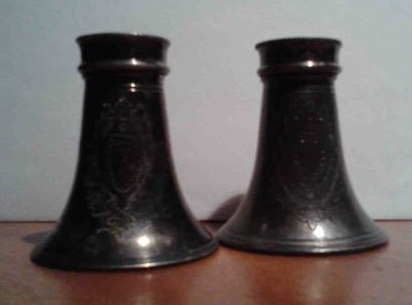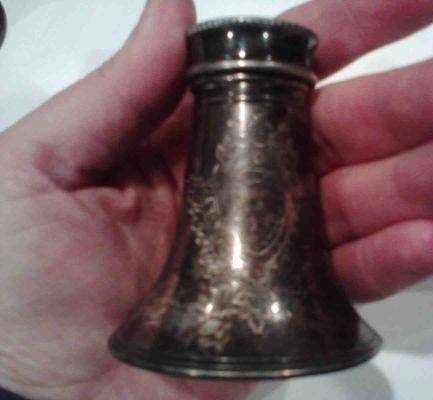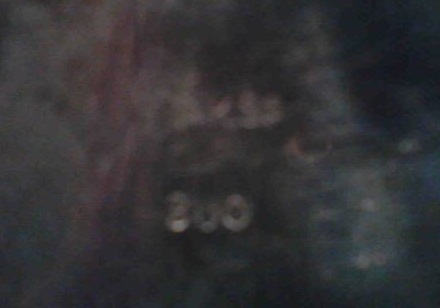Hi. I have a K.S. Co. salt and pepper set imprinted with the number 300 on the bottom (below the standard man’s face logo and K.S. Co. logo imprint). They are about 2 and a half inches tall and taper from top to bottom with the tops being about an inch wide and the bottoms being just more than two inches wide. Both have tops that can easily screw on or off. I do not have a weight in ounces for the shakers.
The set has the normal wear and tear with a few small imperfections but no major dents, cracks, or scratches.
I was wondering at about what price what this set might be valued? Thanks for any input and information! (Sorry my pictures are not great.)
Thanks!



Hi there Bethany and thanks for joining us. This company only made silverplated goods so your salt & pepper are not sterling silver, and as such have little or no commercial value. The “300” is probably the pattern number.
Regards,
Uncle Vic
Oh well, it didn’t hurt to ask. Thanks for your quick reply.
That’s right Bethany, it never hurts to ask. A couple of basic rules of thumb that may help you when looking for American silver: First, if its solid sterling silver (92.5% silver) it will almost always have the word(s) “sterling”, “sterling silver”, or “925/1000 FINE”) stamped on it. Second, prior to about 1850-60 most American solid silver was “coin” silver, yes, made from melted down coins and was typically 90% silver and would bear the word “coin” or sometimes the number(s) “9” or “900”. Both coin and sterling were in use from the mid-1800s until about 1890 when sterling became dominant.
Finally, English sterling silver - the 92.5% silver standard - will almost never have the word “sterling” on it. The English legal system uses - to this day - a stamp called the “lion passant” which is the profile of a lion facing left with its right paw raised. That means “sterling” in UK-Speak.
Sterling silver from other countries amy use the word “sterling” or the number “925”. Now for the tricky part: Silver makers from the US, the UK, and other counries went to elaborate lengths to use “pusedo marks” to try and pass silver plate off as solid sterling silver. They usd fancy names such as “Quad Plate”, “A1” etc, but quite often they just put no purity marks whatsoever. In the US and the UK it is illegal to mark silver as sterling when it is not, but tricky pseudo marks are used to this day. Be careful, and if you are in doubt, we will be happy to take a look at your finds here.
Those of us that help moderate this site are volunteers and our motto is “there is no such thing as a dumb question” so every inquiry will be treated with the utmost respect.
Regards,
Uncle Vic


